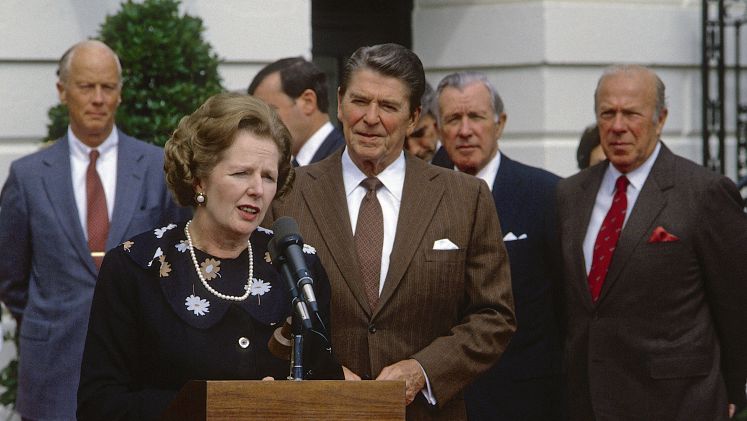Following a landslide victory in 2019, the Conservative party, a staple of British politics for nearly two centuries, is heading for an historical defeat. Vince Cable revisits the 1924 election that spelt the end of the Liberal party, following its own 1906 landslide victory, and argues that this time it could be the turn of the Conservatives.
Innumerable polls and electoral statistics are being pored over in anticipation of the 2024 General Election. One of the more instructive sets of data is, however, to be found in the archives: the 1924 election (or more precisely the three elections between November 1922 and October 1924). One hundred years ago, one of the two parties which had ruled Britain since the emergence of electoral politics, albeit on a limited franchise and without women, was eclipsed as a political force. It was caught in a downward spiral of decline and disintegration. It could now happen again, this time to the Conservatives.
The Liberals offer a case study in how to destroy a seemingly invincible political party.
It should be said at the outset that such a scenario is unlikely to be realised in one clean break with the past. But my own doorstep campaigning as a foot-soldier in the current battle tells me that something strange is happening. It may even be as strange as what Dangerfield called the “Strange death of Liberal England” (it died in Scotland and Wales too). A party which was seen as a natural party of government, and which had bred a sense of entitlement to rule, lost its way. The coalition of interests and values which sustained it fell apart. Conditions then were very different: a country traumatised by the losses of the Great War and the pandemic and economic depression which followed it. But there is enough in that experience to suggest to me that, this time, the Conservatives may be unable to dust themselves down after a bad beating and prepare themselves for a long march back to power, as they did after the 1945 and 1997 elections.
The Liberal Party: from landslide victory to wipeout
The Liberals offer a case study in how to destroy a seemingly invincible political party. In October 1924 the party was led by Asquith and fielded Lloyd George: the two leading figures from the reforming pre-war Liberal administration. The 1906 government had been constructed on the back of one of the great landslide victories in British politics with just short of half the popular vote. In office the Liberals laid the foundations of the modern welfare state introducing the state pension, free school meals and national insurance. It established Britain as an open, free-trading economy, turning its back of Tory protectionism. It asserted the supremacy of an elected parliament over hereditary entitlement. And it upheld basic trades union rights. From the pinnacle of popularity and political achievement however they were reduced in 1924 to a hapless rump: 40 seats and 18 per cent of the vote; behind Labour with 151 seats and 33 per cent and the Tories with 412 seats and 47 per cent. The party leader lost his seat. There was no recovery.
The Liberal Party was a coalition as most parties are; but it was trying to be a coalition of opposites which wasn’t possible.
Autopsies carried out on the Liberal corpse has revealed more than one cause of death. There was a bitter clash between Asquith and Lloyd George resulting from the latter replacing the former during the War and becoming a great war leader in the Churchill mould. The two titanic egos led to an open split and two competing Liberal Parties which had separate slates of candidates in the 1918 and 1922 elections. Reconciliation and repairs came too late to save the ship from sinking. Personalities apart, there was also a deep and fatal structural flaw. The Liberal Party was a coalition as most parties are; but it was trying to be a coalition of opposites which wasn’t possible. At a time of growing class consciousness, It was trying to be a bourgeois party of the middle class and a party of the working class. It was the party of the bosses and of the workers. Unfortunately for the Liberals, there was a more authentic and less compromised party of the working class waiting in the wings. The same is true today for the Conservatives.
Just as the old Liberal Party faced an authentic working-class party which better represented half of its coalition, the modern Tory party faces Farage’s seductive bundle of Red Wall prejudices.
The impossible 2019 Conservative coalition
Boris Johnson’s historic victory in the 2019 election was achieved by creating a remarkable coalition, sometimes caricatured as consisting of “Red Wall” and ‘Blue Wall’ voters, though there was a mixture of red and blue bricks in both “walls”: also with the “Red Wall” running through Southern sea-side towns and the Blue Wall through posher Northern suburbs. The ‘Blue Wall’ voters were (and are) relatively prosperous, middle class, well educated, socially liberal and in favour of smaller government and less tax. They were also Remainers. The “Red Wall” voters were not merely different but opposite: from relatively poor towns, working class, less well educated, socially illiberal (especially on immigration) and in favour of bigger government (preferably without the tax to pay for it). They were also Leavers.
It might just have been possible for Sunak to escape fatal damage with a good, well-timed, election campaign. But, alas, no.
To make this coalition work would have required inspirational leadership, high administrative competence, low political cunning and good luck. Instead, we got Johnson, Truss, Sunak and a succession of nasty global shocks. The party supporting them had become a hollowed-out club of geriatric silliness. And just as the old Liberal Party faced an authentic working-class party which better represented half of its coalition, the modern Tory party faces Farage’s seductive bundle of Red Wall prejudices. The Labour and Liberal Democrat opposition have also been well disciplined, well prepared, inoffensive and happily complementary. It might just have been possible for Sunak to escape fatal damage with a good, well-timed, election campaign. But, alas, no.
The Liberal Party died a slow and painful death in the inter-war period. The Tories may enjoy the benefit of quick, assisted dying with help from their friends on the populist right. We shall then get what the public is said to be clamouring for: change.
Read more articles on the LSE blogs’ General Election 2024 series.
All articles posted on this blog give the views of the author(s), and not the position of LSE British Politics and Policy, nor of the London School of Economics and Political Science.
Image credit: Sean Aidan Calderbank on Shutterstock.







